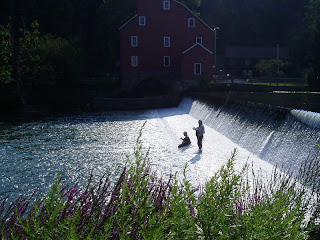 Penn State Live: Cheaper, lighter and more energy-efficient broadband devices on communications satellites may be possible using metamaterials to modify horn antennas, according to engineers from Penn State and Lockheed Martin Corp.
Penn State Live: Cheaper, lighter and more energy-efficient broadband devices on communications satellites may be possible using metamaterials to modify horn antennas, according to engineers from Penn State and Lockheed Martin Corp."Existing horn antennas have adequate performance, but have undergone little change over several decades except for advances in more accurate modeling techniques," said Erik Lier, technical Fellow, Lockheed Martin Space Systems Co. "Modifications enabled by metamaterials can either enhance performance, or they can lower the mass and thus lower the cost of putting the antenna in space."
Lighter antennas cost less to boost into space and more energy-efficient antennas can reduce the size of storage batteries and solar cells, which also reduces the mass. Metamaterials derive their unusual properties from structure rather than composition and possess exotic properties not usually found in nature.
"Working with Penn State, we decided that the first year we were going to focus on applications for radio frequency antennas, where we thought we had a reasonable chance to succeed," said Lier. According to Douglas H. Werner, professor of electrical engineering, Penn State, this is one of the first practical implementations of electromagnetic metamaterials that makes a real world device better.
"These results also help lay to rest the widely held viewpoint that metamaterials are primarily an academic curiosity and, due to their narrow bandwidth and relatively high loss, will never find their way into real-world devices," the researchers report in the current issue of Nature Materials.
They specifically designed their electromagnetic metamaterials to avoid previous limitations of narrow bandwidth and high intrinsic material loss, which results in signal loss. Their aim was not to design theoretical metamaterial-enhanced antennas, but to build a working prototype….
A three-dimentional rendering of metamaterial lined feed horn antenna with low loss, low weight, and over an octave bandwidth for satellite communications shown with satellite. From the Penn State website


































